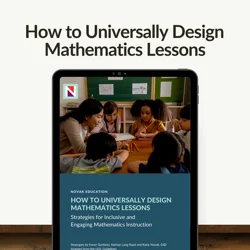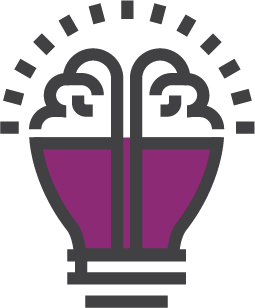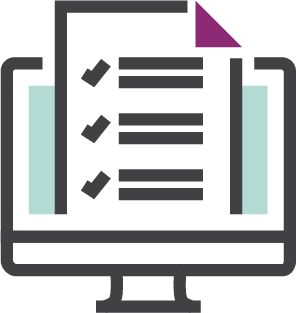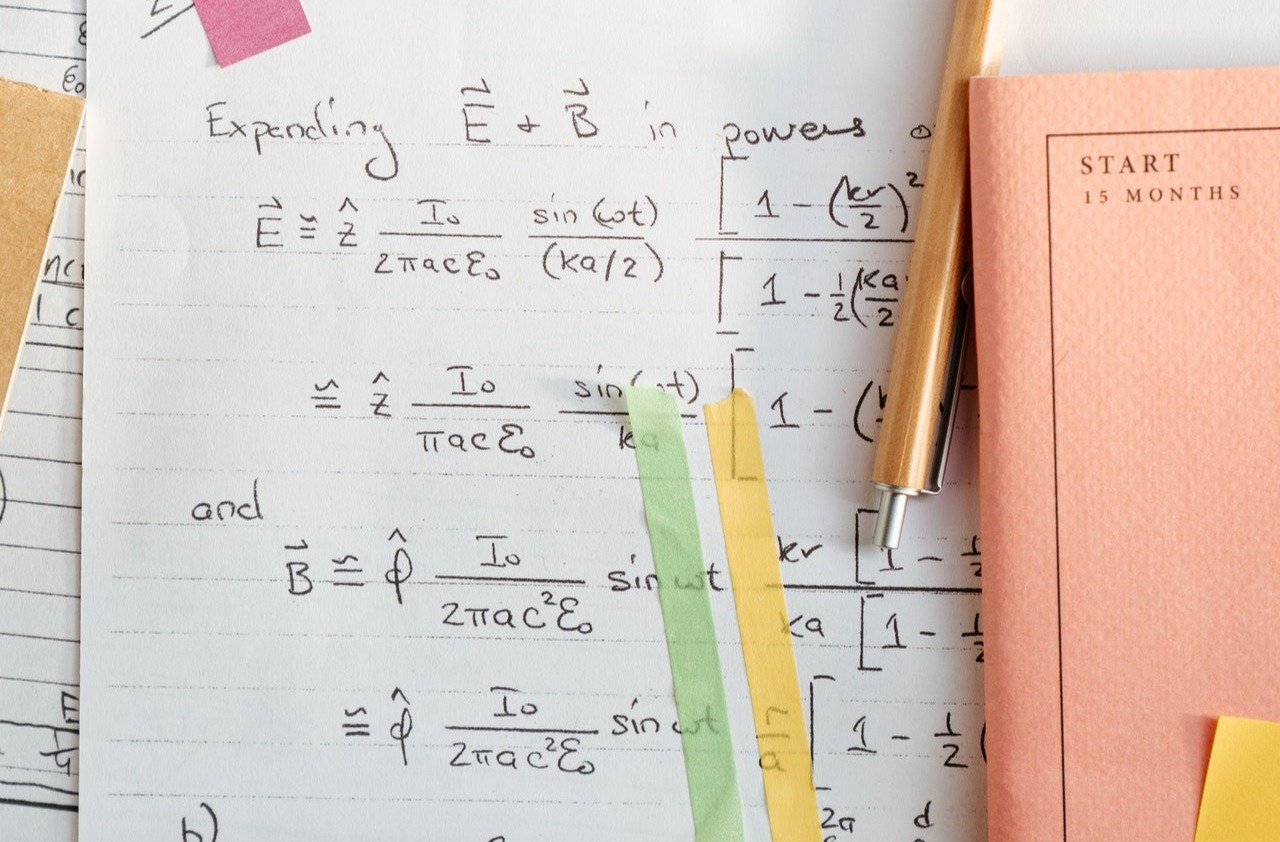Previously we shared our “UDL Accommodations Faculty Meeting Protocol” designed to help educators better understand how to incorporate accommodations and scaffolds to improve outcomes for all learners. (If you haven’t already, check it out here!). The protocol begins before the meeting - asking all educators to bring a lesson plan. At the conclusion of the meeting, teachers are encouraged to choose an assignment or assessment of their own that could benefit from scaffolding and more flexibility and revise it.
We practice what we preach and provide exemplars to help you to design your lessons from the UDL lens - starting with makeovers on math lessons. Oftentimes, math remains a bit of an outlier when beginning to implement UDL. At first glance, it may not seem as easy to redesign lessons for inclusion when speaking in terms of numbers. Math teachers may feel concerned that, by offering a choice of activities, students may miss out on needed skills practice. They may worry that during a self-differentiated learning experience, students will not use the most effective strategies. They may ask whether giving access to reference sheets and other tools will lead to students who can’t remember formulas and procedures for high stakes tests. And we hear you! With the help of the brilliant Nathan Lang-Raad and Karen Gartland, we have pulled together tips to implement the UDL Guidelines with a specific math focus which your math teachers can use to review their lessons.

We assure you that implementing the UDL Framework within math is very possible and helps to create a better experience for all of our learners! Through the use of UDL strategies, we encourage learners to make meaning from mathematics and persevere in their work (MPS1), to communicate their ideas and to critique other’s reasoning (MPS3) , and to select and utilize appropriate tools (MPS5). By growing students’ skills in the practice standards, we help to cultivate learner agency. To demonstrate this, my colleague Libby Often and I started with three different lesson plans. Check out the UDL Makeovers below.
UDL Lesson Plan Makeovers
UDL Makeover for Grade 3
| |
Original |
UDL Makeover |
Eureka Lesson
 Methods Methods |
Grade 3 Eureka Math, Module 4, Lesson 11
- Fluency practice
- Application problem
- Concept development
- Problem Set
- Student debrief
|
Fluency practice options
Provide an option for students to participate in one of the fluency activities outlined in the Eureka lesson. Create stations with directions on all four activities. Encourage students to choose the activity that would challenge and engage them.
Application problem options
- Problem A: The banquet table in a restaurant measures 3 feet by 6 feet. For a large party, workers at the restaurant place 2 banquet tables side by side to create 1 long table. Find the area of the new, longer table.
- Problem B: One-fourth of the banquet table has an area of 9 square feet. If the width of the table is 3 feet, what is the length? What is the area of the table?
Concept development options
Provide explicit instruction for learners on 36 square units. Next provide the following options to continue with 24, 48, and 72 square units.
- Stay with teacher in small group
- Watch recording of Grade 3.4, Lesson 11 with Duane Habecker who creates mini-lessons on youtube for every Eureka lesson. The video can be paused, replayed, etc for those who need repeated viewing of the concept. Note: The Edpuzzle platform allows educators to extend the work of a video, by placing multiple choice or open-ended questions at strategic points throughout the video.
- Use the Zearn website to review and extend the work of the lesson. Zearn is a free website that mirrors the Eureka lessons
Student debrief options
At the end of the lesson, allow students to participate in the debrief by reflecting in writing, on Seesaw, or by chatting with a partner or small group regarding one of the following questions:
- How did the Application Problem connect to today’s lesson?
- How did the Fluency Practice help prepare you for the lesson?
|
|

Assessments
|
Problem Set |
Problem Set
- Complete on paper or on Edulastic
- Provide extension activities for when students finish including the following options:
- Go back to fluency activities
- An Open Middle problem. UDL tip: Provide challenge options that delve deeper into mathematical concepts and create connections across domains
- A math fact fluency game/activity
- Ensure that the following materials are available:
- Manipulatives
- White boards
- Number lines
|
UDL Makeover for Grade 6
| |
Original |
UDL Makeover |
Understanding Rates
|

Goals
|
- Goal: To identify and represent rates and to use them to solve problems
- Subgoals: Define rates as a special kind of ratio, identify and solve unit rates
- Prior Knowledge: Students have already defined and used unit ratios and equivalent fractions
- This will be used for: Students will use this knowledge to solve problems involving scale factor, and to represent linear relationships where the rate represents the slope of a line
|
- Begin by activating prior knowledge. Put on a timer for 5 minutes. Ask students to review what they know about unit ratios and equivalent fractions. Options: they can talk with a partner, write/draw the answer and/or review their notes/online textbook for a refresher.
- Next, introduce the goal of the lesson: Options: Ask students to explain the goal to each other or write it in their own words.
- Provide the vocabulary words (Rate, Ratio, Unit Rate, Units of Measure, Quantity) and ask students to complete a vocabulary rating scale.
|
|

Methods
|
- Launch: Remind students of a commonly used rate, miles per hour. Ask students to list QUANTITIES that they see every day (e.g. desks, students, pages, hours) Then create ratios that compare these quantities (e.g., desks: student, pages: hours).
- Explore worked examples
- Student work from online textbook
- Students summarize what they learned
- Students create ratio poster and discuss
|
- During the launch, provide explicit instruction where you pre-teach vocabulary, model a worked problem, and ask students to reflect on their level of understanding.
- Provide 10 minutes for self-differentiated learning where students can work with you in a small group diving deeper into vocabulary (this connects back to the vocabulary rating scale), watch a Brainpop video on ratios, or watch the Khan Academy video on intro to ratios.
- When you ask students to summarize what they learned, provide the option for them to write a summary or share a short video summary and post on a Padlet, for example.
- Instead of requiring all students to make the same poster, provide them with options to create a representation of ratio, rate, and unit rate. Students can draw the poster, create an infographic on Canva, write a poem about the three concepts, or make a short video like the Khan Academy video.
- Students can share their representation in small groups and have a discussion. Be sure to provide discussion questions like, “How did this assignment help you better understand the difference between ratio, rate, and unit rate?”
|
|

Assessments
|
All students complete:
- Homework from online textbook
- Summative Assessment: Quiz and Unit Test on Ratios and Rates
|
When you assign homework and assessments, ensure students have appropriate scaffolds.
- When students take the unit test, encourage them to use the online textbook, their notes, and the representation they created about ratio, rate, and unit rate.
- Include a super challenge problem on the assessment for bonus points so see which students are prepared for an additional level of challenge.
- Provide an opportunity for a retake if they attend an extra help session first and reflect on the mistakes they made on the assessment.
|

UDL Makeover for Grade 9
| |
Original |
UDL Makeover |
Understanding Linear Inequalities
|

Goals
|
The original lesson has clear goals.
- Illustrate the solution set to a system of linear inequalities on a coordinate plane
- Use systems of linear inequalities to solve problems in context
|
- Begin by activating prior knowledge. Put on a timer for 5 minutes. Ask students to review what they know about systems of linear equations.. Options: they can talk with a partner, write/draw the answer and/or review their notes/online textbook for a refresher.
- Next, introduce the goal of the lesson: Options: Ask students to explain the goal to each other or write it in their own words.
- Provide the vocabulary words (plane, intersection, system of linear equations) and ask students to complete a vocabulary rating scale.
|
 Methods Methods |
- Warm-Up
- Introduce vocabulary
- Provide explicit instruction
- Practice - provide a point in the solution set
|
Warm-Up/Vocabulary Considerations
- Fun tip: Pre-survey students to determine interest areas and provide warm up word problems that incorporate their interests.
- Provide explicit instruction where you pre-teach vocabulary with visuals, examples, non-examples, etc., model a worked problem, and ask students to reflect on their level of understanding.
- Provide 10 minutes for self-differentiated learning and at the end of the time, ask them to complete the warm-up.
- Work with you in a small group diving deeper into vocabulary (this connects back to the vocabulary rating scale)
- Review a tutorial on systems of linear equations on PurpleMath
- Watch the Khan Academy video (2 minutes) on systems of linear equations
- Provide options for students to review sections in online textbooks, supplemental curriculum resources, etc...
- Provide an engaging scenario (word problem) and provide options for students to discuss, brainstorm, write how they would approach solving the problem.
Explicit Instruction Considerations
- Remind students of the different strategies that are available to them when deciding where to shade (i.e, choosing a test point, changing the format the inequality is written in)
- Encourage active engagement during explicit instruction through modeling, asking students to writing/type notes, and asking students to annotate diagrams either in hard copy or digitally.
- You may want to provide colored pencils to help students differentiate shading but also provide the option to use different patterns for students who may be colorblind.
- Use the practice problem as a formative assessment to ensure that students are comfortable with graphing equations and inequalities. The results of the formative assessment will allow you to create flexible groupings. Students who are successful with practice problems can move on to classwork, while students who struggle will continue to work in a small group for targeted instruction.
|
|

Assessments
|
All students complete:
|
Classwork/Homework Considerations
- Make explicit connections between homework problems and explicit instruction, as in, “Problems 1-3 are similar to the practice problem we completed today,” so they have an example as they are working.
- When students complete homework, encourage them to use the online textbook, their notes, reference sheets, Desmos link...
- Include a super challenge problem on the assessment for bonus points so see which students are prepared for an additional level of challenge.
- Provide an answer/solution key to at least some of problems so students can ensure their strategy is correct.
- Encourage students who are struggling to begin to review solution key and describe the set they do not understand as an alternative homework assignment.
|
Key Takeaways
- Always post lesson goals and target success criteria. By sharing goals and standards with students, it sends them a powerful message that you value them as learners, that you trust them to keep you accountable, and that you believe they deserve to know about their education. Providing goals and success criteria offers the opportunity to highlight and reinforce mathematical vocabulary and procedures.
- Reactivate student knowledge! Without any reinforcement or connections to prior knowledge, information is quickly forgotten—roughly 56 percent in one hour, 66 percent after a day, and 75 percent after six days. Before you build on a previous lesson, reactivate that knowledge. Math teachers are especially aware of how counting numbers leads to integers and on to irrational numbers -- without a strong base, the building will fail.
- Remind students of the different strategies that are available to them to cultivate learner agency and help to create problem solvers.
- Encourage active engagement during explicit instruction - and provide options for expression! Students need to recognize the math that exists in the world around them. Remember, what is necessary for some is important to provide as options for all.
Remember, you do not need to implement all UDL tips at the same time. As you reflect on your lesson planning process, and reflect on grade-level standards, consider incorporating 1-2 strategies in each lesson until it becomes more a part of your practice. If you begin simply by asking students where in their lives they have used ratios, or when they have needed to estimate the price of snacks they picked up at the store, you encourage them to model their lives with mathematics (MPS4). As you provide direct instruction in specific procedures, ask them to compare them to prior knowledge and reflect on the efficiency of those procedures (MPS3 and MPS8). Also, be sure to ask students to reflect on the options and choices that are most relevant, authentic and meaningful as that will help you to plan future lessons that embrace variability, target grade-level goals and foster learner agency.
Implementing UDL is a process. Start small. Look at one of your lessons and give it a UDL makeover.
Looking to implement Universal Design for Learning in your learning community? Contact us.
Libby Often is currently the Mathematics Department Chair at Lowell High School in Lowell, Ma. She is a graduate of the EdD program in Math and Science at UMass Lowell. Her work has been published in Techniques magazine, published by ACTE, and the Annual Colloquium Journal, published by UML GSE. Connect with Libby @e_often.
This article has been updated since it's original publishing date of 4/21.





